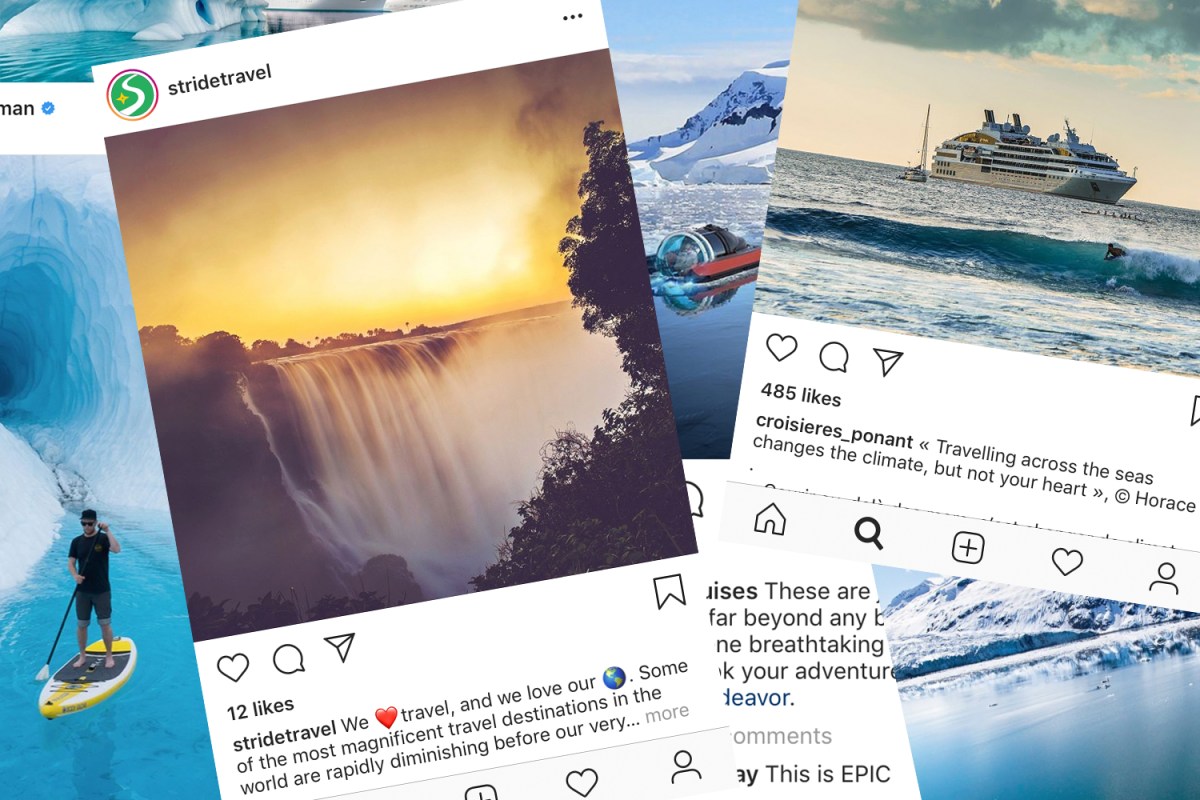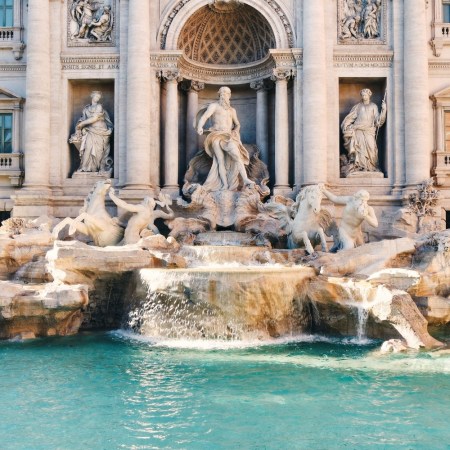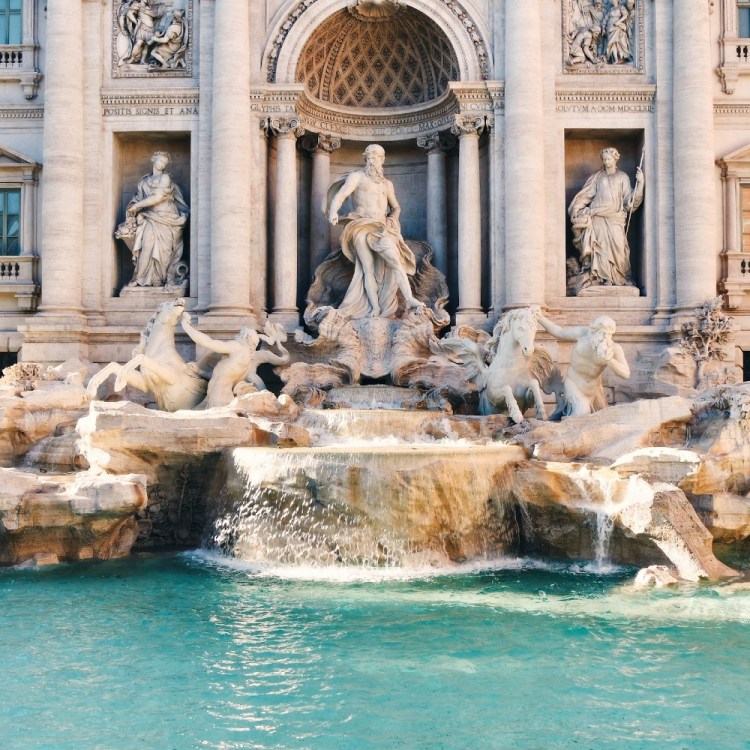You may have seen the phrase “climate grief” making the rounds in the media this year. It’s a more intense version of “climate anxiety” or “eco-anxiety,” a condition reported in The New York Times back in 2008, where people express feeling helpless against the scientific consensus of climate change and its effects. For some, the forecasted “climate change catastrophe” has taken a quantifiable toll on their mental health.
Meanwhile, others are experiencing, you could say, the opposite effect. There is a less reported, climate change-adjacent phenomenon occurring that’s actually causing people to jump into action — not to curb greenhouse gases, protest pipelines or lobby politicians, but to travel.
You could call it “climate-change porn,” or “disaster capitalism” or “last chance tourism.” Whatever the term, what we’re talking about here is a trend wherein travelers use the global crisis as the impetus to visit sites that may rapidly change in their lifetimes (like glaciers) and to access places that were once off limits or inaccessible for tourists (like the Northwest Passage). It’s part misguided exploration, part morbid Instagram fodder, but it doesn’t look like it’s slowing anytime soon.
Looking at the trend as a whole, there are at least three types of climate-change tourism that stand out. Below, we take a look at them, taking place from Alaska to Italy to the Arctic Ocean.
The Make-Believe Explorer, Arctic Ocean
One of the most prominent examples of this trend goes back to 2016 when Crystal Serenity became the largest luxury cruise ship to traverse the Northwest Passage. The cruise made headlines because, up until that point, ice made the Atlantic-to-Pacific Ocean route impossible to pass for ships of that kind. Now, climate change has melted the area enough for ships to sail during the summer. At the time, The Washington Post called it “a journey that will mark the first case of mega-scale tourism in one of [the] last virtually untouched landscapes left in the world.” But the more enlightening descriptions come from Crystal Cruises itself. In a press release in 2016, the company writes that the region is “so remote that it was only first transited in 1906, and on only a handful of occasions since then.” The escort ship, it was noted, was the RRS Ernest Shackleton, named after the famous polar explorer.
In other words, part of the selling point — tickets started around $22K and went into the six figures — was that guests would feel like Shackleton, or more appropriately Roald Amundsen, who completed the aforementioned inaugural passage. (Certainly not like Sir John Franklin who led a crew in 1845 who all disappeared.) Of course, that’s hogwash. This is a fantasy to be bought at a high price, not a feat worthy of mentioning in the same breath as these explorers. But Crystal isn’t alone. Northwest Passage cruises are now offered by many other companies with similar marketing copy; Polar Cruises writes that its trip allows you to discover the area “just as the world’s greatest polar explorers once did,” while Ponant writes that you will cross “in the wake of Explorers.”
Critics of ramming these polluting floating cities through delicate environments may have felt better when Crystal Cruises canceled the route in 2017, after just one other Northwest Passage journey. But as High North News noted around the time of the announcement, Crystal was working on a “polar-class megayacht” called the Crystal Endeavor. The company has since announced this new ship will travel through the Northeast Passage in 2021. Fares for that journey will start just under $50K.
The Instagrammers, Alaska
For most of our lives, we’ve worked under the assumption that the annual cycle of a glacier includes both melting and accumulation. If the temperatures drop low enough in the winter and snowfall is heavy enough, any summertime melt will essentially equal out. Thus, if Instagram existed twenty years ago and you were shown footage of people canoeing or stand-up paddleboarding in glacier melt [like in the video above], you could in good conscience comment, “Rad.” Now, more people are specifically seeking out glacier experiences in Alaska both because of and despite the fears over climate change.
As The Telegraph recently reported, “Tour companies in the region are reporting a huge increase in demand for glacier-related activities, while cruise ships experienced a record season last year, with the number of customers up 33 per cent compared to 2010.” Alaska’s glaciers are being hit especially hard, when compared to the rest of the world, due to a larger increase in temperature. According to an NBC News report in July, while the temperature around the globe has risen an average of two degrees Fahrenheit in the last 50 years, Alaska has warmed about four degrees.
You wouldn’t know any of that looking at video of the undeniably picturesque glacier lakes on Instagram. Take, for example, the 15.6M-follower account @earthpix’s repost of National Geographic photographer Toby Harriman. None of the top comments are about climate change. Instead, people write things like “If you fall it’s over [crying laughing emoji],” “One of the dopest shots i have seen,” and, “Hell yeah just don’t fall in, you will freeze your ass off.” Apparently that last person hasn’t heard about the four-degree temperature increase.
The Bucket Listers, Global
This week, Vice reported on one of the most shameless examples of this trend: Stride Travel’s new campaign called “Places Disappearing Due to Climate Change.” As the article notes, the initiative “encourages visitors to book tours to 10 destinations it’s marketing as under siege from climate change.” But if you look at the main page on the travel site, it’s even worse than it sounds. The category now has 437 trips from 14 tour companies that qualify, and each module is marked with an icon that appears to be the Earth and a thermometer engulfed in a green flame. If you hover over it, a text box pops up that reads, “This trip visits a destination that is affected by climate change.” [Update: It should be noted that the company’s Stride Gives Back campaign, which applies to any trip with a climate change badge, gives 10% net revenue to “organizations that help mitigate climate change in these destinations and across the world, starting with the Arbor Day Foundation.”]
In 2019, the general public — and certainly travel companies — can’t feign ignorance when it comes to the impact of tourism. It’s been over a year since “The carbon footprint of global tourism,” one of the first studies quantifying the carbon emissions of the industry as a whole, was published in the journal Nature Climate Change. It found that tourism accounts for a whopping eight percent of global greenhouse gas emissions, and that number is expected to increase. We also know the oversized toll that air travel specifically has on the environment. So why are travel companies, and travelers themselves, unconcerned they are expediting the destruction?
The answer lies back at Stride. The front page of their climate change campaign lists destinations like Venice, Mount Kilimanjaro, Greenland and Patagonia as the hottest (literally and figuratively) disappearing destinations. These are places that were already on the bucket lists of seasoned travelers and people who aren’t planning to travel until they retire well before climate change came into the public consciousness. So we end up with the classic argument: I can’t stop other people from visiting these places, so why should I deprive myself? The immediate response, of course, is that by adding to the degradation of these cities, countries and landforms, you’re depriving future generations.
Or we could go back to the explorers of yore: Do we want our legacy to be like them, one dedicated to science? Or do we want our legacy to be the destruction of the places they discovered in the first place?
This article appeared in an InsideHook newsletter. Sign up for free to get more on travel, wellness, style, drinking, and culture.
























